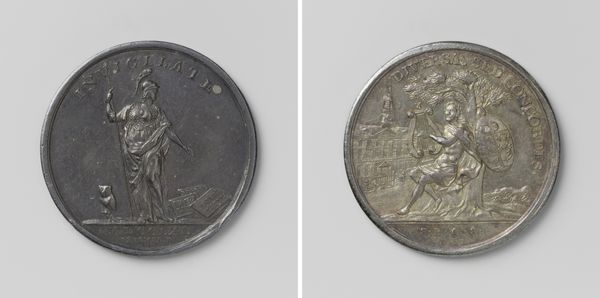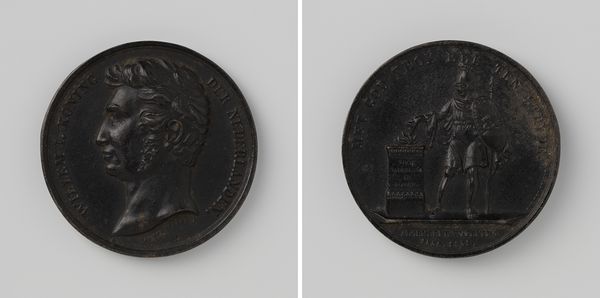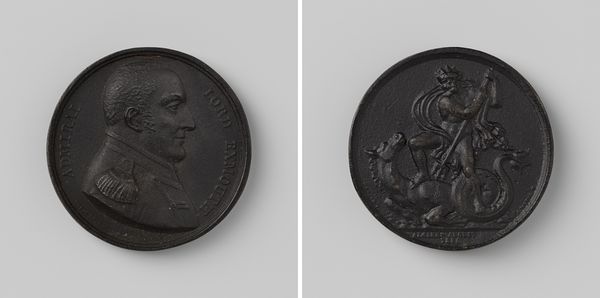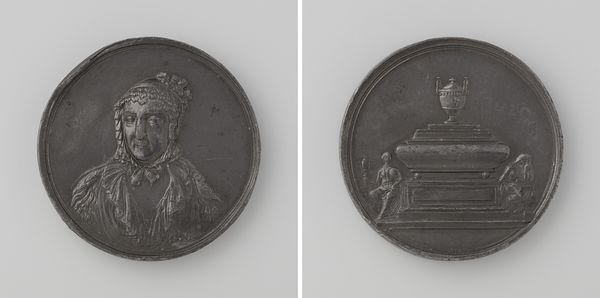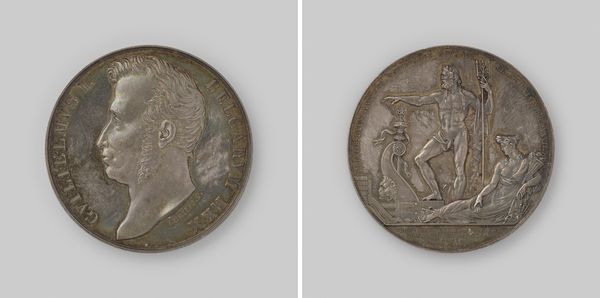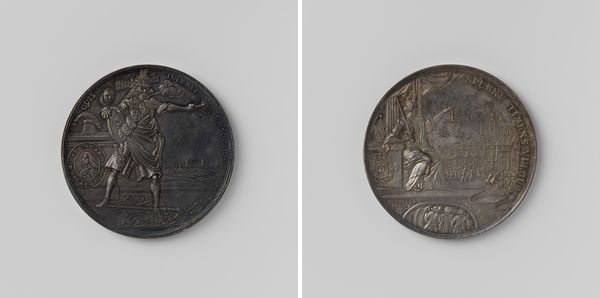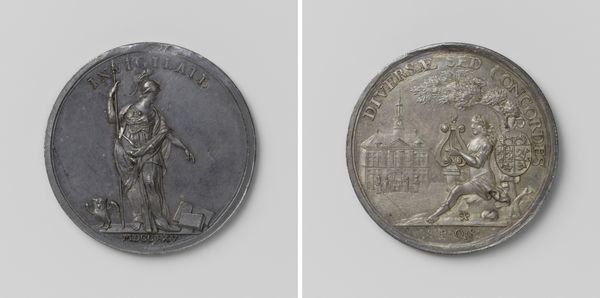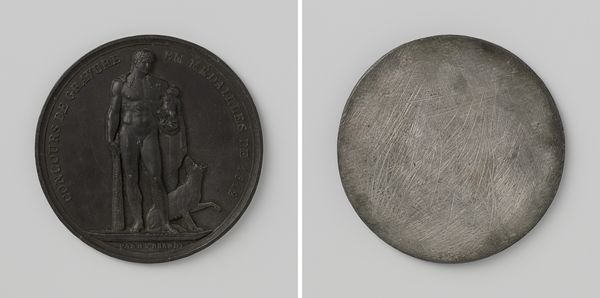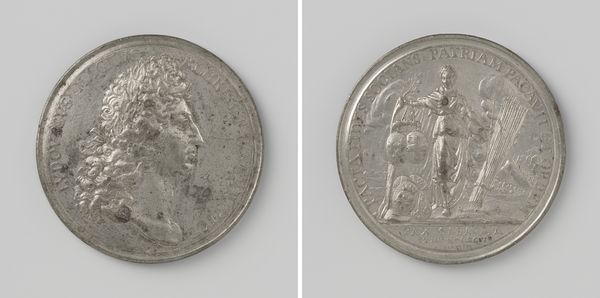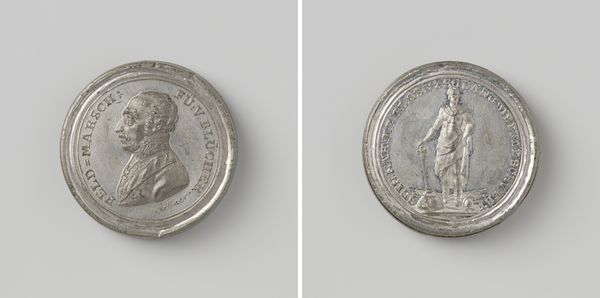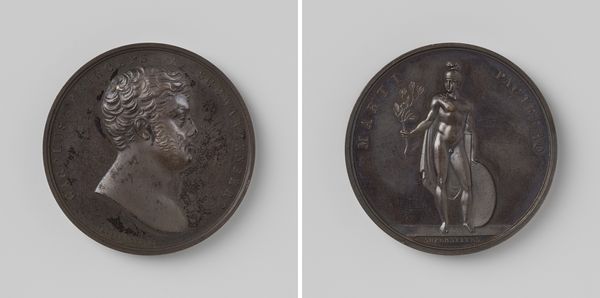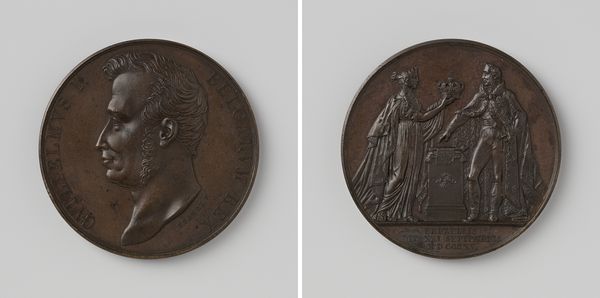
Slag bij Quatre-Bras, ter ere van Willem Frederik George Lodewijk, erfprins der Nederlanden 1815
0:00
0:00
metal, relief, sculpture
#
portrait
#
neoclacissism
#
metal
#
sculpture
#
relief
#
ancient-mediterranean
#
sculpture
#
history-painting
#
statue
Dimensions: diameter 4.2 cm, weight 65.32 gr
Copyright: Rijks Museum: Open Domain
Curator: This striking metal relief, created in 1815 by Adriaan Bemme, is titled "Slag bij Quatre-Bras, ter ere van Willem Frederik George Lodewijk, erfprins der Nederlanden" which translates to "Battle of Quatre-Bras, in honor of Willem Frederik George Lodewijk, Hereditary Prince of the Netherlands". It resides here at the Rijksmuseum. Editor: My initial impression is that it has an almost melancholic feel, despite being made to commemorate a battle. The low relief and muted tone give it a sense of quiet contemplation rather than outright celebration. Curator: That's an interesting point. It's designed within the conventions of Neoclassicism, very much emulating ancient Roman coin imagery of emperors and victorious generals, aiming to attach those virtues to Prince Willem. Public image management through such art pieces was incredibly important to solidify the renewed monarchical rule after Napoleon’s defeat. Editor: Absolutely, and note the allegorical figure of Victory on the reverse! She extends a laurel wreath and holds a staff, both classical symbols but reworked for the context. One is always looking at those cultural messages that blend older symbolic forms with contemporary political necessities. Curator: Exactly! And consider the context. Quatre-Bras, although strategically significant, wasn't a resounding victory. Perhaps that tempered ambition contributes to this subtle melancholy we both see. This work lives in a web of cultural tensions that reflect shifting power, national identity, and commemorative function. Editor: Yes, because what is presented, in these forms, is power but there’s often a counter-narrative being played out through how those powers and events are actually perceived or play out historically and psychologically in public perception. A cultural record and, at the same time, a stage! Thank you, these historical images give one so much to unpack. Curator: My pleasure. Understanding how even these seemingly straightforward historical commemorations work within broader cultural and political currents helps us to interpret the period with much more nuance.
Comments
No comments
Be the first to comment and join the conversation on the ultimate creative platform.
